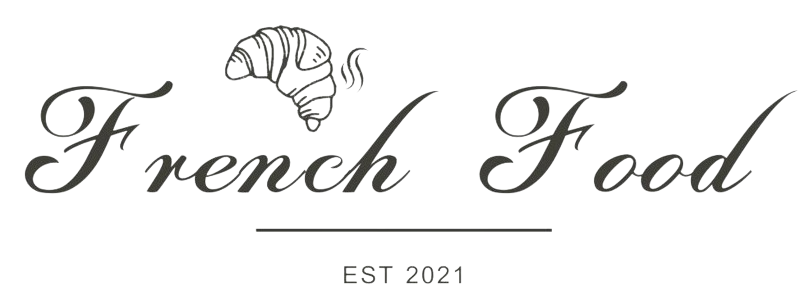11 Best French Champagne Brands from France
We may earn a commission through all links on this website. As an Amazon Associate, we earn from qualifying purchases.French champagne is known for its complex flavor profile, which features notes of lemon, citrus, and fresh fruit. People love French champagne for its quality and flavor. The bubbles are also incredibly fine and delicate, with a crispness that can’t be found in other sparkling wines.
French champagne also has a long and rich history, with its origins dating back to the 16th century. This adds to the appeal and makes it even more desirable. Furthermore, French champagne is often associated with luxury and special occasions, so it’s also a great way to celebrate.
In the early days of champagne production, the French were the first to develop the method of secondary fermentation, which is the process of adding sugar and yeast to the wine to create carbon dioxide. This process is what gives champagne its signature sparkle and fizz. French champagne makers have also been perfecting the production process for centuries, ensuring that each bottle is as perfect as possible.
As a result, certain French champagne brands have mastered the art of champagne making and are known for their high-quality and delicious bottles.
Moët & Chandon
Moët & Chandon, a celebrated French champagne house since 1743, is recognized globally as a symbol of luxury and indulgence. Famous for its vibrant and generous style, it’s the champagne of choice for many of the world’s high-profile events. One of their best-selling bottles, the Moët Imperial, is celebrated for its perfect balance of Pinot Noir, Pinot Meunier, and Chardonnay. Moët & Chandon also produces the Dom Perignon, named after the monk who significantly improved the quality and production process of champagne. Fun fact: each second, somewhere in the world, a bottle of Moët & Chandon is opened!
Ruinart
Established in 1729, Ruinart holds the distinction of being the oldest established Champagne house. They are known for their exquisite Chardonnay-dominant champagnes, which are characterized by their elegance, delicacy, and aromatic freshness. Ruinart’s Blanc de Blancs is a stand-out favorite. This champagne house also boasts a rich history of innovation, including the invention of the first “rosé” champagne in 1764. A fun fact about Ruinart is that it stored its wines in the Crayères, chalk quarries that have been declared a historic monument.
Veuve Clicquot
Founded in 1772, Veuve Clicquot gained its name and reputation through the indomitable widow (veuve in French) Clicquot, who led the house to international fame in the early 19th century. Veuve Clicquot’s Yellow Label Brut has become its signature champagne, known for its depth and complexity. Another notable contribution from Veuve Clicquot is the invention of the riddling process, a method still used today to remove sediments from bottles. The brand’s rich heritage and striking yellow-labelled bottles make it instantly recognizable.
Bollinger
Bollinger, established in 1829, is known for its powerful, sophisticated, and complex champagnes. Their best-selling Special Cuvée, characterized by a rich, biscuity flavor, is a blend of 60% Pinot Noir, 25% Chardonnay, and 15% Meunier. Bollinger has had a long-standing relationship with British secret agent James Bond; it has been the official champagne of 007 since the 1979 film “Moonraker”.
Laurent-Perrier
Founded in 1812, Laurent-Perrier is globally recognized for its style, freshness, and elegance, all thanks to a large proportion of Chardonnay in their blends. Their top-seller, Laurent-Perrier La Cuvée Brut, is celebrated for its precision, freshness, and elegance. A fun fact about this house is that it was among the pioneers in creating a “zero dosage” champagne, presenting an entirely new idea of brut nature champagne to the world.
Louis Roederer
Louis Roederer, established in 1776, is known for its exquisite range of champagnes, including the legendary Cristal. Initially created for Tsar Alexander II of Russia in 1876, Cristal is now celebrated as one of the world’s most prestigious champagnes. The house stands out as it still remains family-owned, focusing on the superiority of their own vineyards for the quality of their champagnes.
Taittinger
Taittinger, with origins dating back to 1734, is famed for its elegance, delicacy, and finesse, largely due to the high proportion of Chardonnay in its blends. Their Brut Reserve is an expression of the house’s style and has gained great popularity. The house also boasts extensive cellars in the historic Gallo-Roman chalk pits, offering a perfect environment for the slow aging process required by the best champagnes.
Piper Heidsieck
Founded in 1785, Piper Heidsieck is known for its structured, fruit-driven, and full-bodied champagnes. Their widely recognized and best-selling champagne is the Piper-Heidsieck Cuvée Brut. The house has a vibrant history associated with glamorous figures and cinema, being one of the first champagnes featured in the films during the early 20th century.
G.H. Mumm
G.H. Mumm, established in 1827, is one of the largest champagne producers globally and is celebrated for its rich and toasty style of champagnes. Mumm Cordon Rouge, marked by a red ribbon, is their best-selling bottle and symbolizes excellence and adventure. A fun fact about G.H. Mumm is that it has a long-standing relationship with motor racing and is traditionally sprayed on the podium of Formula 1 Grand Prix.
Lanson
Founded in 1760, Lanson is one of the oldest French champagne houses and is known for its fresh and fruity style of champagne straight from Reims. Their popular Black Label Brut is a blend of 50% Pinot Noir, 35% Chardonnay, and 15% Pinot Meunier. Lanson has been an official supplier to the British Royal Court since 1900, testifying to its exceptional quality.
Perrier-Jouët
Established in 1811, Perrier-Jouët is known for its floral and elegant champagnes. The Perrier-Jouët Grand Brut is a signature bottle, appreciated for its freshness and subtle complexity. One fun fact about Perrier-Jouët is that they produced the first “dry” champagne, steering away from the sugary champagnes popular at the time, and changing the world of champagne as we know it.

